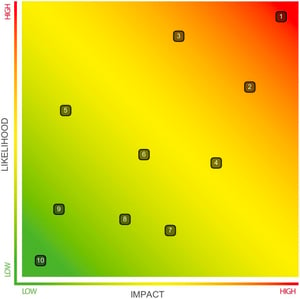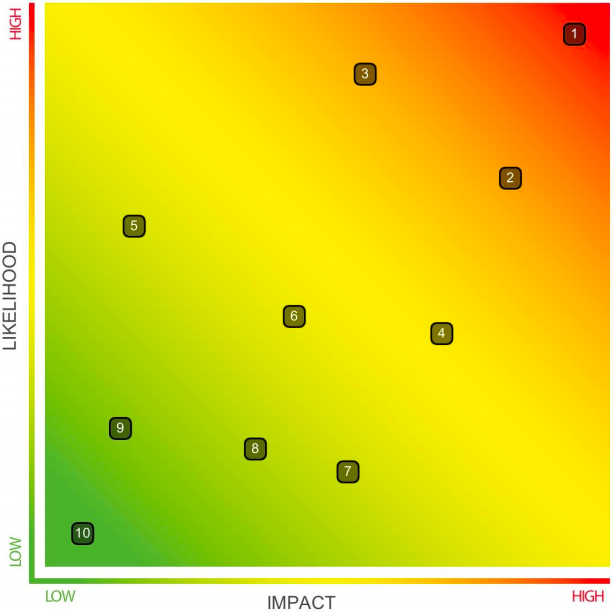
A risk map is built by plotting the frequency of a risk on the y-axis of the chart and the severity on the x-axis. Frequency is how likely the risk is or how often you think it will occur; severity is how much of an impact it would have if it did happen. The higher a risk ranks for these qualities, the more threatening it is to your organization.
Last week we discussed the importance of risk maps and why every risk-conscious organization should begin using them (check out our post on how risk mapping allows you to gain insight, use valuable resources efficiently, and improve mitigation). Now, we’re giving you four tips on how to build the map itself.
How to Build a Risk Map
1. Involve people from all parts of your organization
Risk mapping is not a process that should be conducted by one person.
Every person in your business, from the CEO to the intern, will have different ideas about what risks are most prevalent to your industry. You cannot involve everyone, but ask multiple people from various departments and levels of authority to ensure you are getting unique viewpoints.
This will also allow you to discover risks that you may not have previously considered and gain new perspectives on how frequent or severe a risk really is.
2. Understand each risk
Simply naming your risks does not allow you to build an effective risk map. You must assess each scenario with a strong understanding of the business and how the risks can impact your ability to continue operations.
Think about what is likely to cause the risk and the consequences it will have if it occurs.
It is also important to be consistent in how you rank each risk in terms of frequency and severity so that the final product is a clear depiction of how the risks compare to each other.
3. Seek guidance
If consulting those within your organization isn't providing a sufficient understanding, look elsewhere.
You can try to determine how likely and impactful a risk will be based on your experience and past losses, but what if you’re a start-up company? You can ask an expert: many insurance providers are able to assist with risk management tools, and if not, they can likely suggest someone who can.
You can also look at similar organizations and industry statistics to help guide your risk ranking.
4. Revisit and modify
You’ve built your risk map and are now using it to help manage and mitigate – great! But it’s important to remember that your risk landscape is constantly changing.
Revisit your rankings with the risk management team at least quarterly, to discuss if the status of any existing risks has changed or if any new risks should be placed on the map. Doing so will ensure that your risk map is a consistently helpful tool that will help you reduce incidents and costs.
ClearRisk Manager is a risk-mapping tool that offers expertise and allows you to quickly build maps within the software. It also has an extensive risk library that offers insight on risks you may not have considered and how to implement mitigation and prevention strategies. Want more information? Learn more below.
If you found this article helpful, you may be interested in:






Your comments are welcome.